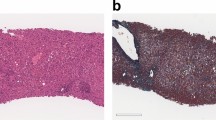Abstract
The isolation of drug-resistant strains of herpesviruses, including Herpes Simplex Virus type 1 (HSV-1) and type 2 (HSV-2), Varicella-Zoster Virus (VZV), and cytomegalovirus (CMV), has been reported with increasing frequency in immunocompromised patients and is a matter of major concern. Determination of anitiviral drug susceptibilities is a prerequisite for the management of drug-resistant herpesvirus infections. Phenotyping studies should be correlated with genotyping, i.e., characterization of the mutations in the target genes. The isolation of drug-resistant virus in the laboratory and the determination of their phenotype and genotype may be useful to clarify the mechanisms of selective drug action. We describe here the procedures used for in vitro selection of drug-resistant herpesvirus mutants and the determination of their patterns of drug-susceptibility. The subcloning of the HSV-1 DNA polymerase gene is described as an example of the methodology followed to determine the mutations(s) in the drug-target viral gene that are associated with the resistant phenotype. To avoid the introduction of mutations by PCR amplification, all subcloning experiments were executed directly on viral DNA. Viral DNA was prepared from each plaque-purified viral strain and a 3.4 kb BamHI fragment cotaining 87% of the HSV-1 DNA polymerase gene coding region was purified and further digested with SacI; the two resulting fragments were subcloned into pU18 and propagated in Escherichia coli. Plasmid DNA was isolated and the inserts were sequenced using dideoxynucleotide chain termination method with T7 DNA polymerase and Taq DNA polymerase in an automated laser fluorescent DNA sequencer. pUC/M13 reverse, universal primers and oligonucleodite primers based on the wild-type virus sequence were used. The nucleotide sequences of the DNA polymerase genes of the different mutants was then compared with the nucleotide sequence of the wild-type HSV-1 KOS strain.
Similar content being viewed by others
References
Field, A. K. and Biron, K. K. (1994) “The end of innocence” revisited: resistance of herpesviruses to antiviral drugs. Clin. Microbiol. Rev. 7, 1–13.
Anonymous (1996) Drug resistance in cytomegalovirus: current knowledge and implications for patient management. J. Acquir. Immune Defic. Syndr. Hum. Retrovir. 12, S1-SS22.
Coen, D. M. (1991) The implicatons of resistance to antiviral agents for herpesvirus drug targets and drug therapy. Antiviral Res. 15, 287–300.
Coen, D. M. (1995) Nucleosides and foscarnet—mechanisms, in Antiviral Drug Resistance (Richman, D. D., ed.), Wiley, Chichester, pp. 81–102.
Safrin, S. (1995) Nucleosides and foscarnet—clinical aspects, in Antiviral Drug Resistance (Richman, D. D., ed.), Wiley, Chichester, pp. 103–122.
Snoeck, R., Andrei, G., Girard, M., Silverman, A., Hedderman, A., Balzarini, J., Sadzot-Delvaux, C., Tricot, G., Clumeck, N., and De Clercq, E. (1994) Successful treatment of progressive mucocutaneous infection due to acyclovir- and foscarnet-resistant herpes simplex virus with (S)-1-(3-hydroxy-2-phosphonyl-methoxypropyl)cytosine (HPMPC). Clin. Infect. Dis. 18, 570–578.
Hitchcock, M. J. M., Jaffe, H. S., Martin, J. C., and Stagg, R. J. (1996) Cidofovir, a new agent with potent anti-herpesvirus activity. Antiviral Res. 7, 115–127.
Collins, P. and Darby, G. (1991) Laboratory studies of herpes simplex virus strains resistant to acyclovir. Rev. Med. Virol. 1, 19–28.
Andrei, G., Snoeck, R., and De Clercq, E. (1995) Susceptibilities of several drug-resistant herpes simplex virus type 1 strains to alternative antiviral compounds. Antimicrob. Agents Chemother. 39, 1632–1635.
Snoeck, R., Andrei, G., and De Clercq, E. (1996) Patterns of resistance and sensitivity to antiviral compounds of drug-resistant strains of human cytomegalovirus selected in vitro. Eur. J. Clin. Microbiol. Infect. Dis. 15, 574–579.
Andrei, G., Snoeck, R., De Clerq, E., Esnouf, R., Fiten, P., and Opdenakker, G. (2000) Resistance of herpes simplex virus type 1 against different phosphonylmethoxyalkyl derivatives of purines and pyrimidines due to specific mutations in the viral DNA polymerase gene. J. Gen. Virol. 81, 639–648.
Sambrook, J., Fritsch, E. F., and Maniatis, T. (eds.) (1989) Molecular Cloning. A Laboratory Manual, 2nd ed., Cold Spring Harbor Laboratory, Cold Spring Harbor, NY.
Morfin, F., Snoeck, R., Andrei, G., and De Clercq, E. (1996) Phenotypic resistance of herpes simplex virus type 1 strains selected in vitro with antiviral compounds and combinations thereof. Antiviral Chem. Chemother. 7, 270–275.
Andrei, G., Snoeck, R., and De Clercq, E. (1994) Human brain tumour cell lines as cell substrate to demonstrate sensitivity/resistance of herpes simplex virus types 1 and 2 to nucleoside analogues. Antiviral Chem. Chemother. 5, 263–270.
Author information
Authors and Affiliations
Corresponding author
Rights and permissions
About this article
Cite this article
Andrei, G., Fiten, P., Clercq, E.D. et al. Evaluating phenotype and genotype of drug-resistant strains in herpesviruses. Mol Biotechnol 18, 155–167 (2001). https://doi.org/10.1385/MB:18:2:155
Issue Date:
DOI: https://doi.org/10.1385/MB:18:2:155




